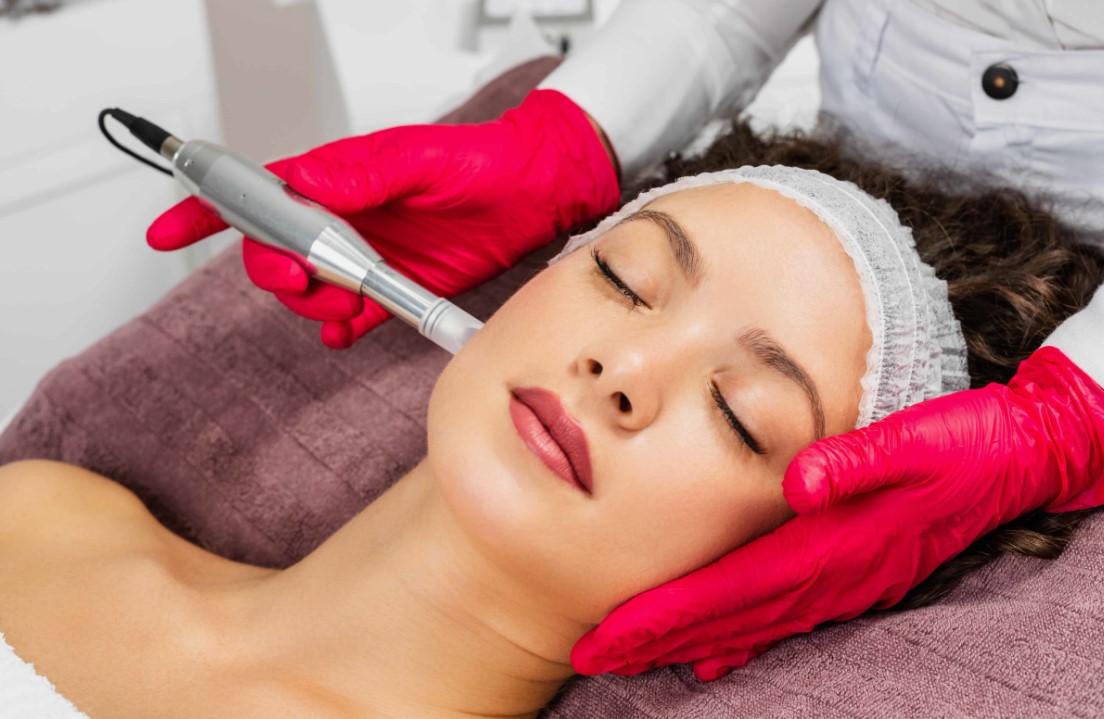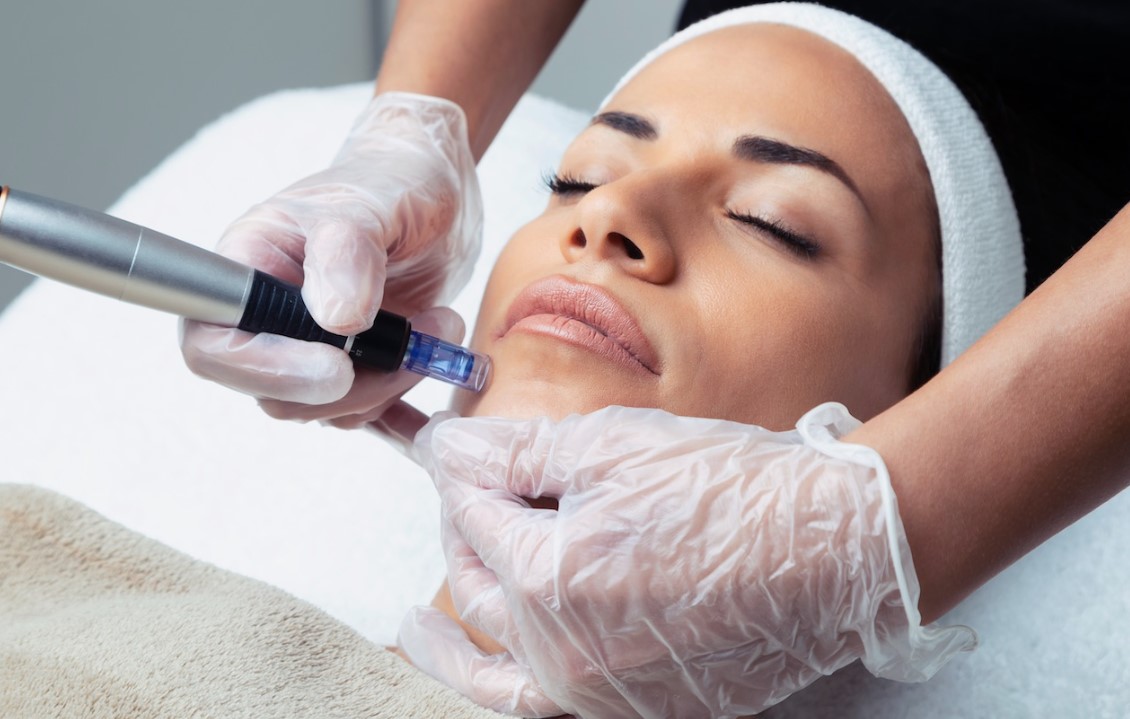The skin, our body’s largest organ, serves as a critical protective barrier against harmful environmental factors. It shields our internal organs from pollutants, bacteria, and UV radiation. However, over time, this barrier can become compromised, leading to clogged pores, inflammation, acne, allergic reactions, increased peeling, and a decrease in local immunity. Visiting an aesthetic medical clinic can provide professional care to maintain healthy and glowing skin. This is essential not only for our physical health but also for our self-esteem and the way others perceive us. Proper skincare, guided by experts at an “aesthetic medical clinic,” is vital to looking youthful and attractive at any age.
The Importance of Skin Care
Healthy skin acts as a shield against environmental aggressors. This protective function is essential to prevent infections, dehydration, and damage from pollutants and UV radiation. Moreover, the skin plays a vital role in regulating body temperature and allowing the sensations of touch, heat, and cold. Neglecting skincare can lead to various dermatological issues, including dryness, eczema, premature aging, and increased sensitivity. Therefore, a consistent and effective skincare routine is crucial to maintain the skin’s integrity and appearance.
What is Chemical Peeling?
Chemical peeling is a skincare procedure designed to address various skin problems. It involves the application of a chemical solution to exfoliate and remove damaged outer layers of skin. This process can reveal smoother, more even-toned skin underneath. Chemical peels can treat a wide range of skin issues, including:
– Pigmentation: Dark spots or hyperpigmentation can be lightened.
– Skin Defects: Minor imperfections and irregularities can be minimized.
– Scars and Cicatrices: Reduces the appearance of scars from acne or injury.
– Dry Skin: Improves moisture retention and smoothness.
– Wrinkles: Reduces fine lines and wrinkles for a more youthful look.
– Spider Veins: Minimizes the appearance of small, visible veins.
– Unevenness and Lumpiness: Smooths out skin texture.
– Loss of Elasticity: Tightens and firms the skin.
– Acne: Helps to clear up acne and reduce future breakouts.
– Dull Skin: Revitalizes and brightens the complexion.

Types of Chemical Peeling
Chemical peels are categorized into three types based on the degree of exposure and penetration level of acids:
- Surface Peeling: This type targets the outermost layers of the skin, leading to cleansing and exfoliation of the epidermis. It does not affect living cells. Surface peels are generally mild and require little to no downtime. They are suitable for treating minor skin issues like uneven texture and mild pigmentation.
- Median Peeling: This type penetrates deeper, destroying living cells in the epidermis, which then detach and exfoliate. Median peels are more intensive and can address more significant skin concerns like wrinkles and moderate pigmentation. Recovery time is longer than surface peels, and there might be visible peeling for several days.
- Deep Peeling: Using an aggressive substance like phenol, deep peels penetrate the lower layers of the epidermis, leading to more significant results. Deep peels are the most intense and are used for severe skin issues such as deep wrinkles, pronounced scars, and severe sun damage. The recovery period is the longest, often requiring weeks of healing time.
Stages of Chemical Peeling
Regardless of the type of peeling, the procedure typically follows these stages:
- Cleansing: The face is thoroughly cleaned of dust, dirt, and skin secretions using gentle products containing hyaluronic acid, milk, and tonic. This step ensures that the skin is free of impurities that could interfere with the peeling process.
- Applying Cleanser: A product containing 5% glycolic acid is applied to remove residual sebum and fat, balancing the skin’s pH and preparing it for the exfoliant. This step enhances the effectiveness of the peel by ensuring even application and penetration.
- Application of Chemical Gel: Acids are applied to the prepared epidermis in a specific sequence. Areas with thinner skin are treated later, and the area around the eyes is treated with care. The application technique varies depending on the peel type and the skin condition being treated.
- Timing: The exposure time of the peeling is determined by a specialist. As the skin adapts, the concentration of acid may be increased. Proper timing ensures that the peel achieves the desired effect without causing excessive damage to the skin.
- Neutralization: The exfoliation reaction continues if the acid is not neutralized properly. Neutralization is performed either after the designated exposure time or sooner if there is an intolerance to the burning sensation or visible mild erythema. This step stops the peeling process and prevents further skin irritation.
Pre-Peeling Preparation
For medium and deep peels, pre-peeling preparation is essential and can last from 2 to 8 weeks. This preparation may include the use of mildly acidic bleaching solutions and oral antioxidant drugs. The goal is to prime the skin for the peel, ensuring optimal results and minimizing potential side effects.

Types of Chemical Peeling Based on Active Substances
Chemical peels can be further categorized based on the active substances used:
- Almond Peeling: Utilizes mandelic acid, derived from almonds, which is suitable for sensitive skin and treats acne, pigmentation, and signs of aging.
- Milk Peeling: Contains lactic acid, which is gentle and hydrating, making it ideal for dry or sensitive skin. It helps to improve skin texture and tone.
- Jessner Peel: A combination of salicylic acid, lactic acid, and resorcinol. It is effective for treating acne, hyperpigmentation, and sun damage.
- Salicylic Peeling: Uses salicylic acid, which is particularly effective for oily and acne-prone skin. It helps to unclog pores and reduce inflammation.
- Retinoic Peeling: Involves the use of retinoic acid (a form of Vitamin A), which promotes cell turnover and is effective for treating fine lines, wrinkles, and pigmentation.
- Glycolic Brightening Peeling: Uses glycolic acid, which is a small molecule that penetrates deeply to exfoliate and brighten the skin.
- BioRePeel: A modern peeling solution that combines multiple acids and active ingredients for comprehensive skin rejuvenation.
Ingredients in Chemical Peels
The composition of a chemical peel varies depending on its type and the skin issues being addressed:
– Superficial Peeling: Often uses organic fruit acids like apple, lemon, milk, and glycolic acid. Other acids may include pyruvic and azelaic (15% or 20%).
– Medium Peeling: Typically uses trichloroacetic acid in concentrations ranging from 15% to 50%, with 25% being most common.
Expected Effects of Chemical Peeling
After undergoing chemical peeling, several improvements can be expected:
– Evening of Skin Texture and Complexion: The skin’s surface becomes smoother, and the complexion more even, resulting in a healthier appearance.
– Reduction of Fine Wrinkles: Fine lines are significantly diminished, and deeper wrinkles are reduced in size, giving the skin a more youthful look.
– Lightening of Age Spots: Hyperpigmented areas become lighter, and less prominent spots may disappear entirely.
– Restoration of Hydrobalance: The skin’s moisture levels are balanced, preventing dryness and promoting a plump, hydrated appearance.
– Increased Tissue Tone: The skin becomes firmer and more elastic, reducing sagging and improving overall texture.
– Strengthening Local Immunity: The skin’s natural defenses are enhanced, reducing the likelihood of infections and irritations.
– Normalization of Sebaceous Glands: Oil production is regulated, which helps to prevent acne and reduce the appearance of pores.
– A Fresher and More Youthful Appearance: The overall effect is a revitalized, radiant complexion that looks healthier and younger.
Preparation for Chemical Peeling
Proper preparation for chemical peeling is crucial to achieve the best results and minimize risks. Recommendations may include:
– Drug Tolerance Test: To ensure there are no adverse reactions to the peeling agents.
– Two Weeks of Preparation: In some cases, a preparation period is necessary to prime the skin for the peel.
– Use of Special Cosmetics: Products containing acids, retinol, and whitening components may be recommended to enhance the peel’s effectiveness.
– Health and Hydration: Ensuring overall good health and adequate hydration supports the skin’s recovery and enhances results.
Frequency of the Procedure
The frequency of chemical peeling depends on the type of peel and the individual’s skin condition. Surface peels may be done more frequently, such as every few weeks, while medium and deep peels require longer intervals between treatments, often several months apart, to allow for complete healing.
Contraindications to Chemical Peeling
Chemical peeling is not suitable for everyone. Contraindications include:
– Skin Hypersensitivity: Individuals with extremely sensitive skin may not tolerate the procedure well.
– Allergic Reactions: Allergies to peeling substances can lead to severe reactions.
– Severe General Diseases: Conditions such as decompensated diabetes mellitus, active systemic diseases, severe hypertension, coronary heart disease, and cancer may contraindicate the procedure.
– Infectious Diseases: Conditions like ARVI and herpes infection should be resolved before undergoing a peel.
– Acute Skin Diseases: Conditions like psoriasis, lichen planus, and dermatitis in the acute stage should be treated before considering a peel.
– Pregnancy and Lactation: Hormonal changes during pregnancy and lactation can affect skin sensitivity and healing.
– Psychopathy: Individuals with certain mental health conditions may not be suitable candidates for the procedure.
Conclusion
Chemical peeling is a valuable procedure for addressing various skin concerns and achieving healthier, more youthful-looking skin. By understanding the types, stages, and ingredients involved, as well as adhering to proper preparation and recognizing contraindications, individuals can make informed decisions about their skincare regimen. Healthy, glowing skin not only enhances physical appearance but also boosts self-esteem and confidence. Embracing a skincare routine that includes periodic chemical peels can significantly contribute to maintaining and improving skin health, ensuring that you look and feel your best at any age.

Cyclist, father of 2, fender owner, International Swiss style practitioner and HTML & CSS lover. Working at the intersection of beauty and mathematics to create not just a logo, but a feeling. Check me out on Dribbble or Medium.
